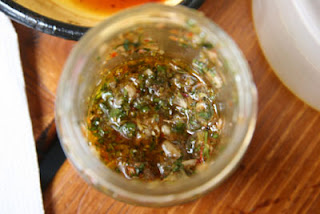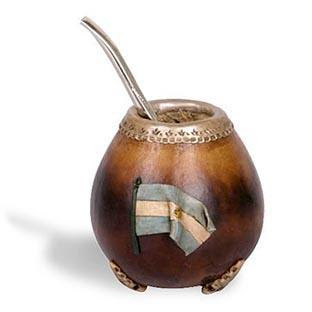History of Dulce de Leche
In 1829 in the providence of Cañuelas in Buenos Aires, the General Lavalle and the General Manuel de Rosas came together in order to make a treaty. The General Lavalle arrived very tired at General Rosas's camp. Manuel de Rosas wasn't in the camp at the moment so Lavalle took a nap on Rosas's tent. While he was sleeping, a serving woman was preparing "la lechada" for the camp. The "lechada" is prepared by heating sugar and milk. The woman went to speak with General Rosas in his tent, but when she entered she discovered the enemy. She didn't know about the treaty the two generals were about to make, so she ran to find soldiers. General Rosas arrived moments before the soldiers, and stopped them from waking General Lavalle. In the chaos, the woman forgot about the lechada she left and when she checked it, she noticed that it had become a dark brown jelly substance. It is said that a very hungry soldier ate the jelly and then dulce de leche was born.
 Recipe
RecipeIngredients:
1 quart milk, preferably whole, organic and as fresh as possible1 cup granulated sugar1 vanilla bean1/2 teaspoon baking soda, dissolved in 1 tablespoon water
Preparation:
In a large, heavy pan with tall sides, combine the milk and sugar. Split the vanilla bean along its length and scrape the seeds into the pot, then throw in the pod. Bring to a simmer, stirring until the sugar is dissolved.
When it has reached a simmer, remove from the heat and add the bakin soda and water, stirring vigorously. When the mixture settles down, return the pan to the heat and bring to a brisk simmer. Simmer for about one hour, or until it turns golden brown. You don't have to stir - go about your business and keep an eye on it.
After the milk mixture has changed to a deep golden brown check it more frequently. This is where you can decide just how dense and thick you want it to be. If you want it pourable, like caramel sauce, wait just until it reaches the consistency of maple syrup - about 20 minutes after the colorchange - and take it off the heat. Strain through a mesh strainer into a glass jar or container and let cool. Or, if you prefer a jam-like consistency to spread on toast, crackers, and anything else you can think of, let it cook longer. It will solidify into chewy candy if you cook it long enough.





